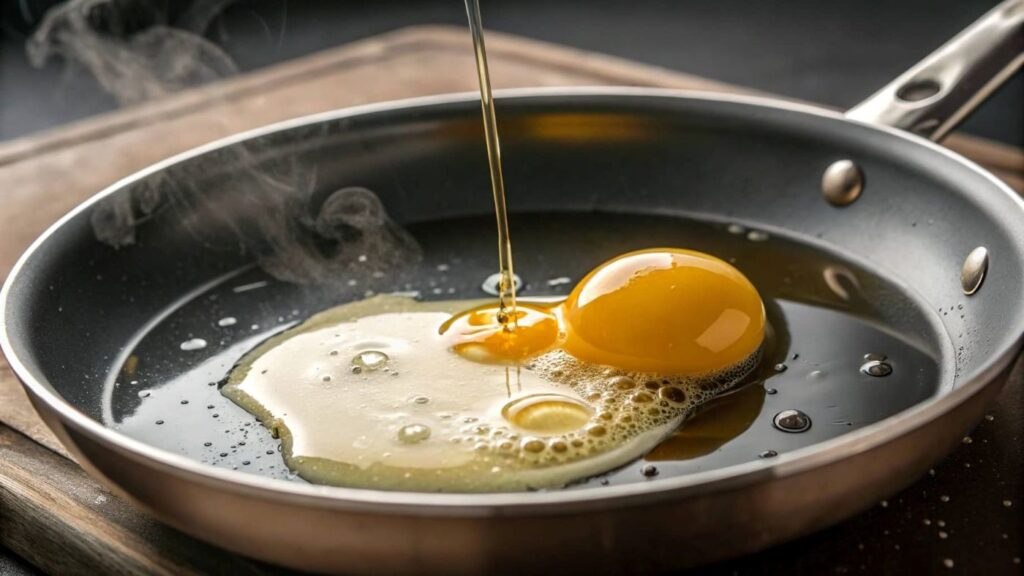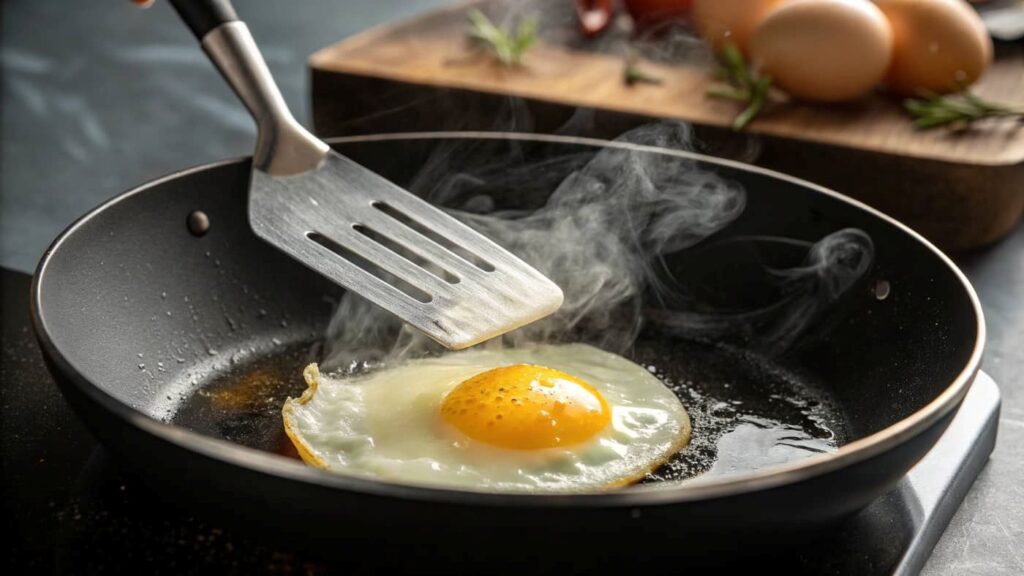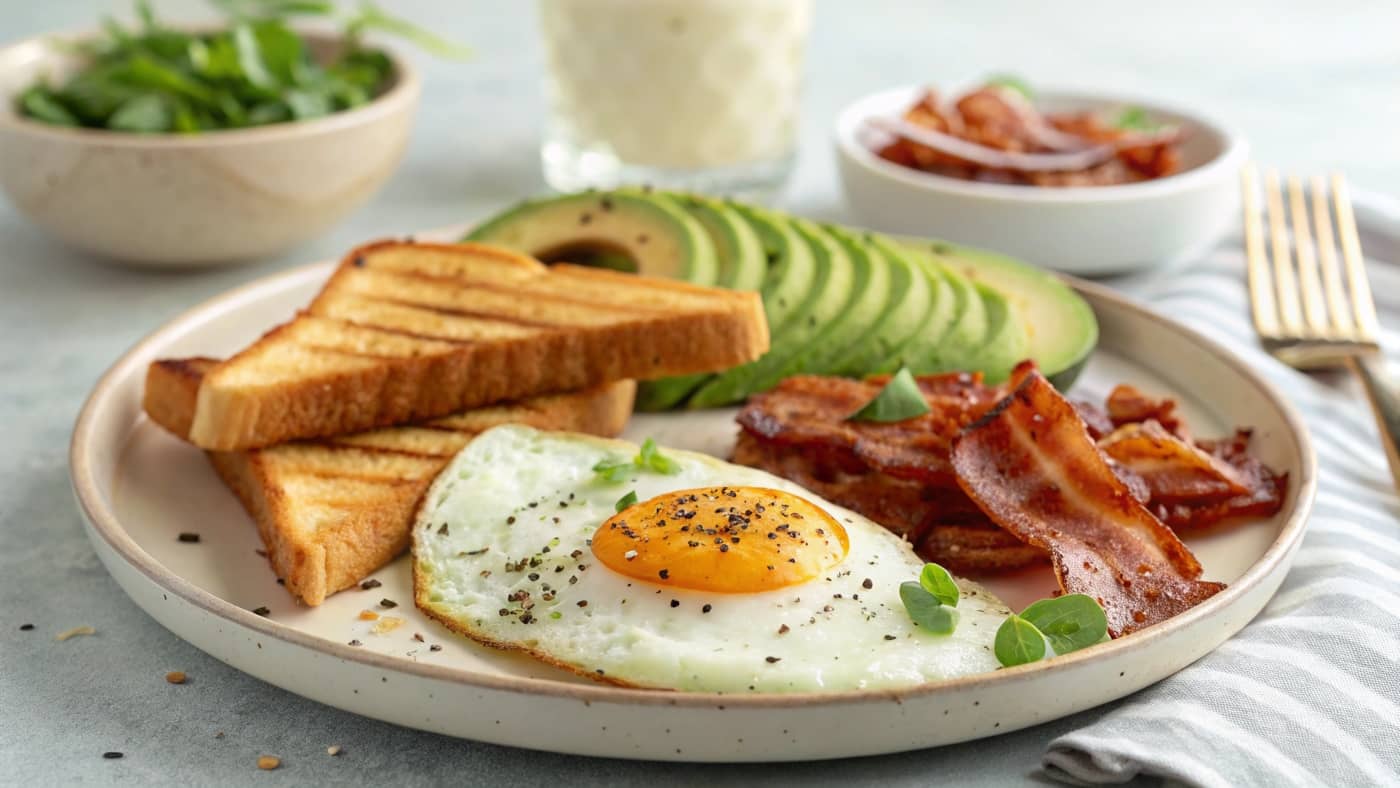There’s something uniquely satisfying about starting your day with the perfect over hard egg. It’s not just about getting the yolk and whites cooked exactly right; it’s the feeling of accomplishment and comfort that comes from nailing a classic breakfast staple. Whether you’re someone who loves the convenience of a quick morning meal or you enjoy crafting a wholesome breakfast sandwich, mastering the art of cooking an over hard egg can elevate your breakfast game to new heights.
For many, the journey to achieving that perfectly firm yolk might seem tricky at first. Maybe you’ve experienced eggs that stick to the pan, yolks that break unexpectedly, or whites that don’t set evenly. Don’t worry—you’re not alone! In this guide, you’ll discover the tips, techniques, and secrets that will help you cook an over hard egg flawlessly every single time. By the end of this, you’ll not only have the confidence to prepare them like a pro but also know how to serve them in creative and delicious ways.
Table of Contents
What Is an Over Hard Egg?
Definition and Characteristics
An over hard egg is the result of cooking a fried egg to the point where both the whites and yolk are completely firm. Unlike an over easy egg, which has a runny yolk, or an over medium egg, which offers a slightly thickened yolk, the over hard egg leaves no room for softness or liquid in the yolk. Every bite is consistent, hearty, and fully cooked.
This style of egg is a favorite among those who enjoy a no-mess breakfast or prefer the taste and texture of a firm yolk. Over hard eggs are especially versatile because they can be easily added to sandwiches, wraps, or salads without the worry of runny yolks spilling out.
Why It’s Loved
- No runny yolk: Ideal for those who prefer a fully cooked egg.
- Great for on-the-go meals: Over hard eggs hold their shape, making them perfect for breakfast sandwiches or meal prep.
- Versatile for different diets: Whether you’re looking for a high-protein option or a breakfast accompaniment, over hard eggs fit right in.
Egg Style Comparison Table
| Egg Style | Whites | Yolk | Cooking Time |
|---|---|---|---|
| Over Easy | Fully cooked | Runny | ~2 minutes |
| Over Medium | Fully cooked | Slightly thickened | ~3 minutes |
| Over Hard | Fully cooked | Solid | ~4 minutes |
Tools You’ll Need to Cook the Perfect Over Hard Egg
Essential Kitchen Tools
Having the right tools on hand can make all the difference in achieving a perfectly cooked over hard egg. Here’s what you’ll need:
- Non-stick skillet or cast-iron pan: A non-stick surface ensures your egg cooks evenly without sticking, while a cast-iron pan adds a classic touch to the process.
- Spatula: Opt for a silicone or metal spatula. Silicone spatulas are gentle and prevent scratching, while metal spatulas offer precision for flipping.
- Heat-resistant oil or butter: Cooking oil or butter creates a non-stick layer and enhances flavor.
Ingredients
- Eggs: Fresh eggs are essential for the best results. Look for high-quality eggs, as they’re easier to cook and deliver superior flavor.
- Oil or butter: Choose a fat that complements your flavor preferences. Popular options include:
- Avocado oil: Neutral and heat-resistant.
- Unsalted butter: Adds richness and flavor.
- Olive oil: A healthier option with a slightly fruity taste.
- Seasonings: Salt, pepper, and optional herbs like paprika or chives to enhance the taste.
Pro Tip
Crack your eggs into a small bowl before adding them to the pan. This ensures no shell pieces sneak into your dish and makes it easier to control the placement of the egg in the skillet.
Step-by-Step Guide to Cooking an Over Hard Egg
Preparation Steps
- Preheat the pan: Place your skillet on medium heat and let it warm up for about 1–2 minutes. A preheated pan prevents the egg from sticking.
- Add oil or butter: Coat the bottom of the pan evenly. Use about 1–2 teaspoons of oil or butter, depending on the size of your pan.
Cooking Steps

- Crack the egg into the pan: Carefully pour the egg from the bowl into the skillet. Let it cook undisturbed until the whites are mostly set and opaque (about 2–3 minutes).
- Flip the egg: Use your spatula to gently flip the egg over. If you’re nervous about flipping, try tilting the pan slightly while using the spatula to guide the egg over.
- Cook the second side: Allow the egg to cook for another 1–2 minutes until the yolk is firm. You can test this by gently pressing the yolk with the spatula—it should feel solid.
- Remove and serve: Slide the egg onto a plate and season with salt, pepper, or other toppings of your choice.
Common Mistakes to Avoid

- Cooking on high heat: High heat can cause the whites to burn before the yolk is cooked.
- Flipping too soon: Wait until the whites are mostly set to avoid breaking the yolk.
- Using a cold pan: A cold pan increases the chances of sticking.
Pro Tip
If you’re struggling to flip the egg, cover the pan with a lid after the whites are set. This will help the yolk cook through without flipping.
Tips and Tricks for Perfect Over Hard Eggs Every Time
- Start with fresh eggs: Fresh eggs hold their shape better, making them easier to cook.
- Control the heat: Medium heat is your best friend for even cooking.
- Steam for perfection: Adding a teaspoon of water to the pan and covering it with a lid can create steam, helping the yolk cook faster and more evenly.
- Experiment with seasonings: Don’t be afraid to try spices like paprika, garlic powder, or chili flakes to add a unique twist.
- Use a thin spatula: A thin, wide spatula provides better support when flipping the egg.
By following these tips, you’ll avoid the common pitfalls and ensure consistent results every time.
Variations and Serving Ideas
Fun Ways to Serve Over Hard Eggs
Over hard eggs are not only a breakfast favorite but also a versatile addition to many dishes. Here are some creative serving ideas:
- Classic Breakfast Plate: Pair over hard eggs with crispy bacon, toast, and hash browns for a hearty breakfast.
- Breakfast Sandwich: Layer your over hard egg with cheese, avocado, and tomato on a toasted English muffin or bagel.
- Protein-Packed Salad: Top a bed of greens with an over hard egg, grilled chicken, and a drizzle of vinaigrette for a light yet satisfying lunch.
- Tacos and Wraps: Add over hard eggs to breakfast tacos or burritos for a flavorful twist.
Creative Variations
- Spicy Twist: Sprinkle chili flakes or add a dash of hot sauce before serving.
- Herbed Delight: Top with freshly chopped herbs like parsley, chives, or dill for an elevated flavor.
- Cheese Lover’s Dream: Melt a slice of cheddar or mozzarella on top of the egg right after flipping.
Troubleshooting Common Issues
Egg Whites Sticking to the Pan
- Use a non-stick skillet or ensure your pan is properly seasoned if using cast iron.
- Add enough oil or butter to create a barrier between the egg and the pan.
- Allow the pan to preheat before adding the egg, ensuring the fat is evenly distributed.
Broken Yolks
- Crack the egg into a small bowl first to prevent any mishaps while transferring to the pan.
- Use a thin, flexible spatula for flipping, and be gentle.
Uneven Cooking
- Cover the pan with a lid after flipping to trap heat and cook the yolk evenly.
- Adjust the heat to medium-low if the egg is cooking too quickly on the outside.
Over Hard Eggs for Different Dietary Preferences
When it comes to food, everyone’s got their quirks, right? And the beauty of over hard eggs is they’re incredibly versatile—they can fit into just about any dietary plan. Whether you’re cutting out dairy, counting calories, or just trying to eat cleaner, these eggs can be your breakfast best friend. Let’s dive into some tips and tricks to make them work for different dietary needs.
How to Make Over Hard Eggs Dairy-Free
Cutting out dairy? No problem! Traditional over hard eggs often use butter to grease the pan, but there are plenty of plant-based alternatives that work like a charm. Coconut oil is a fan favorite—it adds a subtle hint of sweetness that pairs well with eggs. If you want something neutral, avocado oil or olive oil does the job without stealing the spotlight.
Pro tip: Make sure you coat the pan evenly with your oil of choice to avoid sticking. Also, use a non-stick pan—it’s the real MVP for hassle-free egg cooking. And hey, don’t skimp on seasoning! A sprinkle of sea salt and cracked pepper can turn a simple dairy-free egg into a flavor-packed delight.
Low-Calorie Cooking Techniques for Health-Conscious Eaters
Watching your calorie intake? Over hard eggs can still be a guilt-free treat. The key is to ditch heavy fats and go minimal. Instead of butter or oil, consider using a cooking spray. It adds just enough lubrication to keep your eggs from sticking without piling on the calories.
Want to take it up a notch? Pair your eggs with steamed veggies like spinach, tomatoes, or zucchini for a low-cal, nutrient-rich breakfast. And if you’re craving some spice, sprinkle on a pinch of paprika or chili flakes. Flavor doesn’t have to mean extra calories—it’s all about being smart with your seasonings.
Pairing Over Hard Eggs with Other Dishes
You know what they say—no egg is an island. Over hard eggs shine brightest when paired with the right sides and drinks. Whether you’re prepping a hearty brunch or a quick weekday breakfast, the right accompaniments can take your eggs from “meh” to “wow!”
Best Side Dishes to Serve with Over Hard Eggs
Let’s be real—over hard eggs are like that reliable friend who gets along with everyone. Want a classic pairing? Go for crispy bacon and a slice of whole-grain toast. Feeling a little fancy? Whip up some smashed avocado and spread it over sourdough for a breakfast that screams café vibes.
For something more filling, roasted sweet potatoes or sautéed greens are fantastic options. They bring a balance of carbs and nutrients that make the whole meal feel complete. And don’t forget about breakfast potatoes! Whether you like them diced, shredded, or smashed, they’re the ultimate egg companion.
Complementary Beverages: Coffee, Juices, and Teas
What’s breakfast without the perfect drink? If you’re a coffee lover, a rich, dark roast pairs beautifully with the savory notes of over hard eggs. Prefer something lighter? Try a glass of freshly squeezed orange juice—the acidity cuts through the richness of the yolk, creating a balanced bite every time.
Not a coffee or juice person? No worries. Herbal teas, especially ones like chamomile or mint, offer a calming counterbalance to your meal. Or, if you’re feeling adventurous, a chai latte adds a warm, spiced kick that’s just chef’s kiss.
So, the next time you cook up some over hard eggs, don’t forget to jazz them up with the perfect sides and drinks. After all, breakfast is the most important meal of the day—why not make it the most delicious too?
Frequently Asked Questions About Over Hard Eggs
What does “over hard eggs” mean?
Over hard eggs refer to fried eggs that are cooked on both sides until the whites are fully set and the yolks are completely firm. This cooking style ensures there is no runniness in the yolk.
What is the difference between sunny side up and over hard eggs?
Sunny side up eggs are cooked on one side only, leaving the yolk runny and visible on top, while over hard eggs are flipped and cooked on both sides, resulting in a fully set yolk.
Are over hard eggs healthy?
Yes, over hard eggs can be a healthy choice as they are a great source of protein, vitamins, and minerals. The overall healthiness depends on how they are cooked (e.g., the type and amount of oil or butter used) and what they are served with.
What are the 4 types of fried eggs?
The four main types of fried eggs are:
- Sunny Side Up: Cooked on one side with a runny yolk.
- Over Easy: Flipped and cooked briefly, leaving the yolk runny.
- Over Medium: Flipped and cooked until the yolk is slightly thickened but still soft.
- Over Hard: Flipped and cooked until the yolk is completely firm.
Related Articles to Explore
To deepen your understanding of breakfast recipes and cooking techniques, check out these articles from Cooking Flare:
- Learn about What Kind of Cheese Is on Jimmy Dean Breakfast Sandwich? for insights into elevating your breakfast sandwich game.
- Discover How Do You Fix a Jimmy Dean Breakfast Sandwich? for quick and easy solutions.
- Master the art of pairing with Is Cottage Cheese in Scrambled Eggs Good? for unique breakfast ideas.
These resources complement your journey to cooking the perfect over hard egg and inspire you to experiment with breakfast creations
Conclusion: Master the Over Hard Egg
With the right tools, techniques, and a little patience, you can master the art of cooking over hard eggs. Whether you’re enjoying them as part of a classic breakfast plate or incorporating them into creative dishes, they’re sure to become a staple in your kitchen repertoire. Remember, practice makes perfect, and every egg cooked brings you one step closer to mastering this simple yet rewarding skill.
Now it’s your turn to try these tips in your kitchen. Share your experience, and don’t forget to experiment with serving ideas to make your over hard eggs truly your own!

